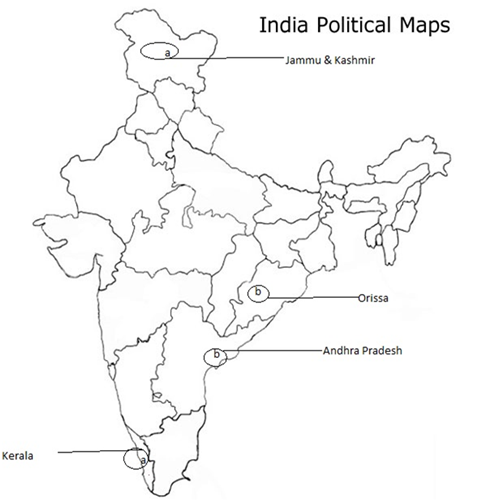Era of One-party Dominance
Take a political map of India (with State outlines) and mark:
(a) two states where Congress was not in power at some point during 1952-67.
(b) two states where the Congress remained in power through this period.
(a) Two states where Congress was not in power at some point during 1952-67 was Jammu & Kashmir and Kerala.
(b) Two states where the Congress remained in power through this period was Orissa and Andhra Pardesh.
Sponsor Area
Some More Questions From Era of One-party Dominance Chapter
One of the guiding principles of the ideology of the Swatantra Party was ________ (Working class interests/ protection of Princely States/economy free from State control/Autonomy of States within the Union)
Match the following leaders listed in List A with the parties in List B:
Four statements regarding one-party dominance are given below. Mark each of them as true or false:
If Bharatiya Jana Sangh or the Communist Party of India had formed the government after the first election, in which respects would the policies of the government have been different ? Specify three differences each for both the parties.
In what sense was the Congress an ideological coalition ? Mention the various ideological currents present within the Congress.
Did the prevalence of a ‘one-party dominant system’ affect adversely the democratic nature of Indian politics ?
Bring out three differences each between Socialist parties and the Communist Party and between Bharatiya Jana Sangh and Swatantra Party.
What would you consider as the main differences between Mexico and India under one-party domination ?
Read the following passage and answer the questions below:
“Patel, the organisational man of the Congress; wanted to purge the Congress of other political groups and sought to make of it a cohesive and disciplined political party. He ...sought to take the Congress away from its all–embracing character and turn it into a close-knit party of disciplined cadres. Being a ‘realist’ he looked more for discipline than for comprehension. While Gandhi took too romantic a view of “carrying on the movement”, Patel’s idea of transforming the Congress into strictly political party with a single ideology and tight discipline showed an equal lack of understanding of the eclectic role that the Congress, as a government, was to he called upon to perform in the decades to follow.” — Rajni Kothari
(a) Why does the author think that Congress should not have been a cohesive and disciplined party?
(b) Give some examples of the eclectic role of the Congress party in the early years.
(c) Why does the author say that Gandhi’s view about Congress future was romantic ?
When did the Constitution of India come into effect ?
Mock Test Series
Sponsor Area
NCERT Book Store
NCERT Sample Papers
Sponsor Area